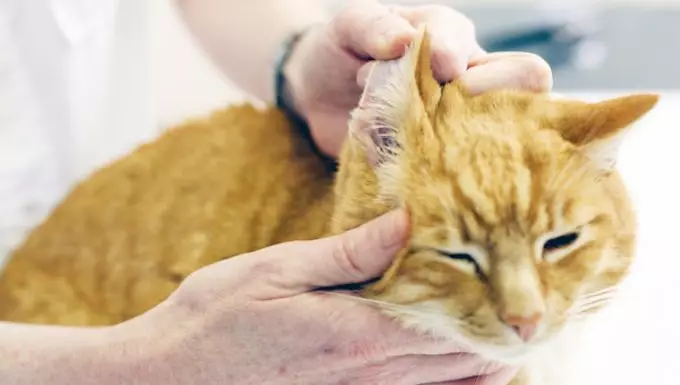Adenocarcinoma in felines, particularly ceruminous gland adenocarcinoma, represents a specific type of ear cancer that primarily impacts the sweat glands present in the external auditory canal. Though this condition is not commonly encountered, it poses significant health risks, particularly for older cats, who are more frequently affected. This cancer type can lead to a variety of concerning symptoms, which can sometimes be overlooked or misattributed to other health issues.
The presentation of adenocarcinoma can be subtle or overt, depending on the stage of the disease. Pet owners should be vigilant for signs that may include dizziness and a lack of coordination. Additionally, cats might exhibit head tilting, the presence of ulcers, or swollen lymph nodes, which can manifest during physical examinations. Masses within the ear canal are also a critical indicator that something might be amiss. Early recognition of these signs is vital, as they can guide quicker intervention and potentially improve outcomes.
While the exact cause of ceruminous gland adenocarcinoma remains unclear, research suggests that chronic inflammation could play a significant role in the development of this condition. Older cats, particularly those who may have other underlying health issues, are more susceptible to developing this cancer. As such, continual monitoring of an older cat’s health can yield early warning signals of potential ailments.
When faced with signs indicative of adenocarcinoma, it is essential to consult a veterinarian for thorough evaluation. The diagnostic process typically begins with an in-depth discussion regarding the cat’s symptoms and medical history, followed by a comprehensive physical examination. Vets often leverage diagnostic tools like blood and urine tests, X-rays, and advanced imaging techniques to ascertain the presence and extent of the condition. In many cases, biopsy procedures can confirm the diagnosis by analyzing tissue samples.
Once a diagnosis of adenocarcinoma is confirmed, treatment usually hinges on surgical intervention. The objective of surgery is to excise cancerous tissues from the ear canal, which may not only alleviate symptoms but also halt the progression of the disease. In more severe cases, radiotherapy may be recommended as an adjunct treatment to manage the condition effectively. Post-operative care is crucial; regular veterinary check-ups will help monitor recovery and ensure that no further complications arise.
Caring for a cat diagnosed with ceruminous gland adenocarcinoma can be a daunting experience. However, with the right approach—early detection, accurate diagnosis, and appropriate treatment—there is hope for managing this rare form of ear cancer effectively. Pet owners should remain proactive and informed about their feline companions’ health, ensuring timely veterinary visits can significantly improve the prognosis. If you have ever encountered this condition or have knowledge from your vet, sharing experiences can help others better understand the challenges faced during recovery.


Leave a Reply